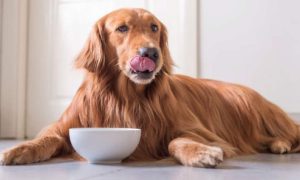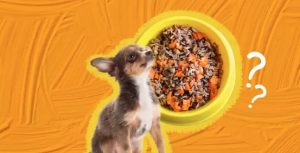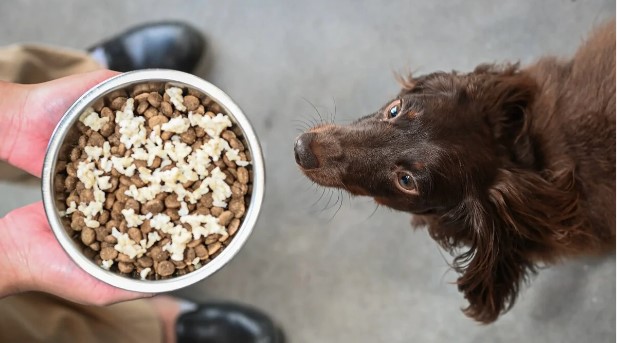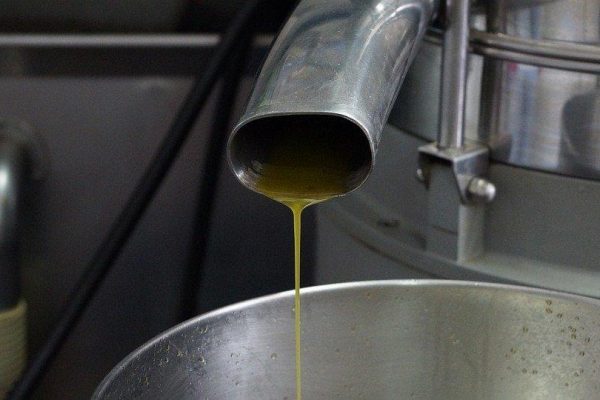Pet owners often try different foods to find the best way to feed their dogs. One of these things is that brown rice is in some dog food. Brown rice is a staple food for humans, so the idea that dogs can eat it makes people curious and raises questions.
This article looks into the question of whether or not brown rice is okay for dogs to eat. We break down the benefits, possible problems, ways to make and serve brown rice, and how it can fit into a dog’s diet while ensuring their health is the most important.
Table of Contents
Can dogs eat brown rice?
Yes, brown rice can be fed in moderation as part of a balanced diet for dogs. Brown rice is an excellent addition to a healthy meal for your dog, but the amount is essential. In three ways, cooked brown rice is suitable for your pet. First, it has few calories and high-quality carbs that are easy to stomach.
This gives your dog energy without making him feel full or tired. This healthy grain has a lot of vitamins D and B, which help keep your dog’s heart healthy.
Advantages of brown rice
Brown rice, which doesn’t have gluten, might help dogs be sensitive to grains. Protein, magnesium, phosphorus, sodium, potassium, and iron are all found in brown rice.
Brown rice has more nutrition and less calories than white rice. So, people who have problems with their dog’s weight or allergies may like this rich grain, especially if they are sensitive to grains like wheat. Most dog breeds can safely eat brown rice, but short-nosed dogs like pugs should be careful because it could choke them.

Due to changes in how they are grown and processed, some brown rice may have more arsenic, but there is no proof that they are bad for dogs. The FDA says brown rice not soaked or cooked is safe for dogs. It is dangerous to cook this grain because the raw version has harmful germs, like Salmonella, that could make your pet sick.
Brown rice should be well-cooked before you give it to your pet, and you should wash your hands after touching any food. If you’re unsure if brown rice suits your pet, talk to your vet.
Disadvantages of brown rice
Like other foods, rice can be bad for your dog. When added to dog food, brown rice can cause stomach problems. Carbohydrate-rich rice gives a dog energy and all the nutrients it needs. But its high starch content makes it hard for a dog’s digestive system to handle. Dogs may get gas, bloat, and diarrhea if they eat this complicated starch.
Brown rice is a high-glycemic food, which means that it can quickly raise your blood sugar, which can make things worse. This trait could be dangerous for dogs who have diabetes or are sick in other ways.
Before making it, you should see if your pet is allergic to rice or grains. Some dogs can’t handle dark rice. Stop giving your pet rice if it starts losing hair or having severe stomach problems after eating it. Second, keep things in balance. Your dog might gain weight and have other health problems if your dog overeats rice.
As a good dog owner, you should monitor how the dog’s food affects its weight. Start with a small amount of brown rice to see what your dog does. Before drastically modifying your dog’s diet, consult your vet.
How to Give Your Dogs Brown Rice
Meals for dogs sometimes have brown rice along with meat and vegetables.
If you want to give your dog brown rice, you need to make a plan.
First, boil brown rice carefully in water or soup until it boils. Turning down the heat, wait 30 minutes before draining the rice. Care must be taken to avoid soft or watery results.

Brown rice is healthy and safe for dogs to eat. But you should be careful about how much your dog eats. There are more carbs in brown rice than in white rice.
So, you need to be careful when moving from white bread or refined sugar to brown rice so you don’t accidentally add more carbs. When you mix brown rice with white grains, the calories are balanced, and you don’t get too many carbs.
Things to watch out for when giving a dog brown rice
Adding brown rice to your dog’s food needs to be done in a specific way to get the most benefits and avoid health problems.
Thoughts about Allergies
Even though it is rare, dogs may be allergic to brown rice. Dogs of any age can quickly get allergies. See a vet if your dog has itchy skin, hair loss, rashes, puking, or ear problems that seem to be caused by brown rice. Their skill will tell if the cause is a rice problem.
Be easy to serve
Brown rice doesn’t need butter, salt, or oil. Don’t give your dog fried rice, either. Too much salt, spices, sauces, and garlic are in this form, which could hurt your pet.
Take in carbs
Carbohydrate-rich brown rice. Store-bought dog food contains carbohydrates. Carbohydrates are essential for a dog’s development and energy needs, but feeding them excessively may cause weight gain and other health problems. You may avoid this by keeping tabs on your dog’s carb intake and discussing his diet with a veterinarian.
As a supplement
Brown rice is always a good part of a healthy diet. Brown rice is low in protein but high in carbs, fiber, and vitamins. To make up for this, a well-balanced diet must include protein-rich foods from other sources. If you don’t find this balance or let your dog eat too much brown rice, it could lead to food deficiencies and other health problems.
FAQs
Can brown rice make dogs sick?
Brown rice can cause dog allergies, but it doesn’t happen often.
What is the maximum amount of brown rice that a dog can consume?
Only a quarter of a cup is safe for large dogs. Small dogs can consume a spoonful or less.
Conclusion
When given with care and knowledge, brown rice can be a good part of a dog’s food. Some dogs can use it as a supplement because it has fiber, vitamins, and carbs that are good for them. It is essential to watch how much you are cooking, cook it right, and know about possible allergies or insole.
Getting protein and other nutrients from sources other than brown rice makes for a well-rounded diet. As responsible dog parents, if we know how to use brown rice in our dogs’ food, we can improve their diet and keep their health and happiness in check. Always talk to ensure your dog’s food dog meets its specific needs.





